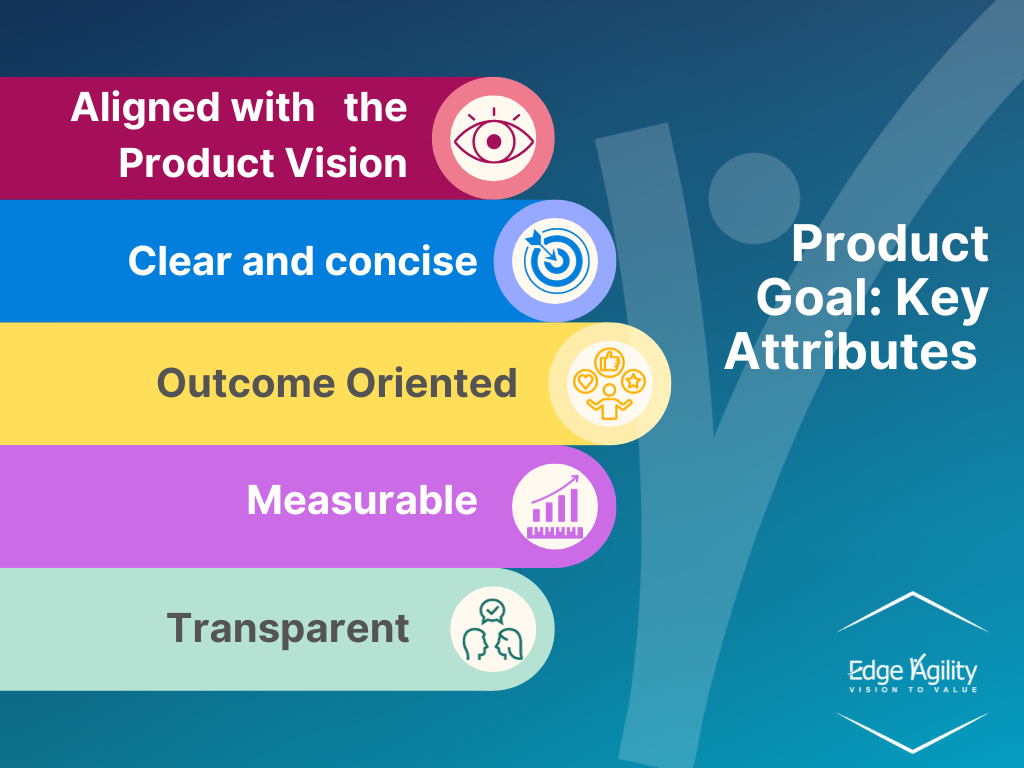Product Goal is one of the three commitments in the Scrum Framework.
It outlines the desired future state of the product and acts as a commitment within the Product Backlog, offering a focal point for the Scrum Team and a benchmark to gauge progress.
There’s no set structure or duration for a Product Goal. It depends on the context. For example, I have worked on Digital products in the banking domain and Product Goal durations were around 3-4 months. When I worked on some hardware products generally product goals durations were more than 6 months.
Scrum’s key rule is maintaining only one Product Goal at a time, completing or discarding it before proceeding to the next. This is to enable focus.
Why We Need Product Goals
Companies typically develop or sustain products aligned with their business and product strategies, often guided by a high-level product vision. This vision, usually aspirational, envisions the product’s potential impact and problem-solving abilities. While motivating, it can be challenging for Scrum Team members to see their role in achieving this vision.
To bridge this gap, the Product Goal offers a tangible, actionable, and measurable target, linking the broader product vision to specific Sprint Goals. It represents a clear step towards the vision, allowing the team to plan and assess their progress.
The Product Goal helps in the evolution of the Product Backlog. Scrum Teams craft backlog items to fulfil the Product Goal, using Sprints and Sprint Goals for gradual advancement. After accomplishing a goal, a new one is set, edging the team closer to the overall product vision.
Occasionally, emerging insights may lead to the abandonment or revision of a Product Goal. This isn’t seen as a failure, but rather a normal part of the iterative and experimental nature of development.
Key Characteristics Of A Good Product Goal

Aligned With Product Vision
Importance of Alignment
- Definition of Product Vision: A brief overview of what product vision entails – the long-term mission and aspirations of the product.
- Harmony Between Vision and Goals: Discuss how goals should reflect the broader product vision, ensuring consistency in direction and purpose.
Strategies for Alignment
- Regular Reviews: Encourage periodic revisiting of the product vision when setting or revising goals.
- Stakeholder Involvement: Highlight the importance of involving key stakeholders to ensure alignment.
Frequently Discussed
The Need for Ongoing Conversations
- Dynamic Nature of Goals: Explain how product goals may evolve with market changes, customer feedback, and internal learnings.
- Regular Team Discussions: Suggest ways to incorporate goal discussions in regular team meetings or stand-ups.
Benefits of Frequent Discussion
- Team Alignment and Engagement: Emphasize how regular discussions keep the team aligned and engaged with the goals.
- Adaptability: Illustrate how frequent discussions allow for quicker adaptations to new information or changes.
Outcome Oriented
Focusing on the End Result
- Difference Between Output and Outcome: Clarify the distinction between focusing on what to build (output) versus what impact it should have (outcome).
- Examples of Outcome-Oriented Goals: Provide real-world examples to illustrate the concept.
Advantages of Outcome Orientation
- Encouraging Innovation: Discuss how an outcome focus encourages creative solutions.
- Customer-Centric Approach: Explain how this attribute leads to better customer satisfaction.
Measurable
The Role of Metrics
- Defining Success: Discuss how measurable goals provide clear criteria for success.
- Choosing the Right Metrics: Offer guidance on selecting meaningful and relevant metrics.
Monitoring and Adjustment
- Tracking Progress: Highlight tools and practices for monitoring goal progress.
- Responding to Data: Advise on how to use data to make informed adjustments to goals.
Transparent
Importance of Transparency
- Building Trust: Explain how transparency in goals fosters trust within the team and with stakeholders.
- Visibility for All Team Members: Discuss the need for goals to be visible and understandable to all team members.
Implementing Transparency
- Tools and Practices: Suggest tools and methods to maintain transparency in goal setting and tracking.
- Open Communication Culture: Emphasize the role of a culture that values open communication.

